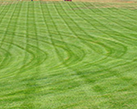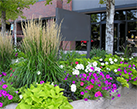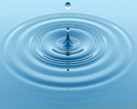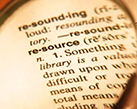What Is Green?
“Going Green” – to pursue knowledge and practices that can lead to more environmentally friendly and ecologically responsible decisions and lifestyles, which can help protect the environment and sustain its natural resources for current and future generations.
Green isn’t just a fad it’s here to stay. It’s part of our Value System. It will be part of our culture as we mature. It’s largely about doing the right thing for the future generation. It’s about leadership; we must stop this waste habit that we have established. It’s about getting back to the fundamentals of being responsible and accountable for your actions today and our subconscious actions for tomorrow.
Waste Reduction = Sustainability
Sustainability = Waste Reduction
EDL Leads You To Sustainability:
|
|
|
|
 |
Green Design |
|
|
Taking a life-cycle approach to designing a property’s plant materials and bed areas, by maximizing space using like-styled low to moderate growth threshold plants along with proper placement to conserve waste, expenses, and resources. |
|
 |
Strategic Utilization Model |
|
|
Developing programs based on the utilization of a property’s area and Clients expectations. This program is specifically designed for your property to reduce waste, time, energy, and fuel conservation. Identifying a Real Estate asset within the stakeholder’s use enables us to provide necessary tasks to areas where perceived value is greatest. |
|
 |
Unique Processes |
|
|
Our unique processes are industry leading techniques that are designed to reduce time and energy, conserving waste and your expenses. |
|
 |
Life–Cycle Plant Maintenance |
|
|
Using a conservation approach to plants from the aspect of growth thresholds, location, exposure, and growth habits. It is designed to extend the life-cycle of the plants, reduce time, waste, energy, and conserve resources. |
|
 |
Utilizing Propane Mowers |
|
|
We currently are using propane mowers on select properties and we are expanding our fleet to accommodate the growing need for green landscape maintenance programs. |
|
 |
Bio-solid and Organic Fertilizer Applications |
|
|
solid and Organic Fertilization Applications – Our refined processed waste and organics program is currently being used on all of our properties. This program has been proven to enrich the soil with nutrients needed to improve the sustainability of the landscape and reduce environmental impact. |
|
 |
Water Conservation |
|
|
Innovation in the area of water conservation is going to come from collection. Should we re-examine the way we collect and reuse water run-off? We have opportunities in the arena of water recycling if we’re able to do two things: adequately and efficiently collect wasted water and runoff, and keep pollution due to chemical use to a minimum. We don’t have all the answers on this subject, but we know that possibilities exist. |
|
 |
Less Energy |
|
|
We save Clients Time and Energy. Forget the energy it takes landscapers to continually prune back and maintain Crepe Myrtles. If a Client had to constantly check up on the trees and make the calls to Landscapers it would be exhausting! Just think of the productive activities Clients could have spent time and energy on, not to mention the time and energy the landscapers were putting into the maintenance work! |
|
 |
Less Distractions |
|
|
Protection is conservation, and vice-versa. At the heart of E-Design™ is the elimination of waste, achieved by proactive conservation of time, energy, and resources.Tangible losses are easy to identify: fuel overages, extra seed, extra wages for overtime work, etc. More serious are the intangibles, the financial and material drains that can’t be easily measured. For example, intangible losses include time and effort interruptions. |
|
 |
More Time |
|
|
We should have an attitude of conservation in every aspect of our lives. When we conserve, we help the planet. When we help the planet, we start a chain of events that helps literally every single living thing on it. And in order to do your part, all you have to do is start where most of your time is spent: where you live and work. A mentality of conservation doesn’t just apply to natural and material resources. It applies to your time, your focus and your energy. |
|
|
|











